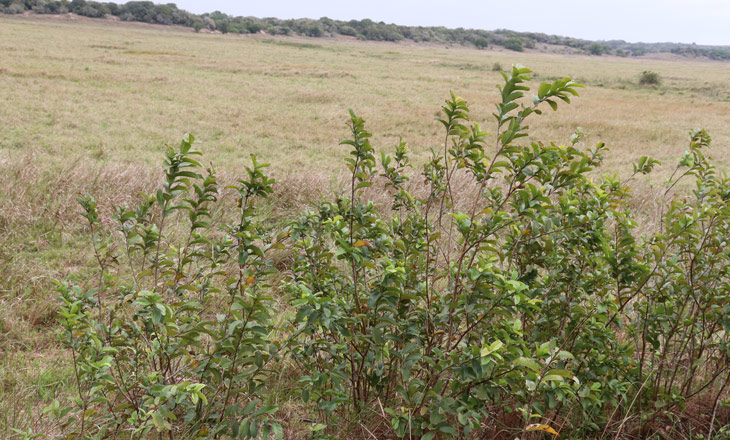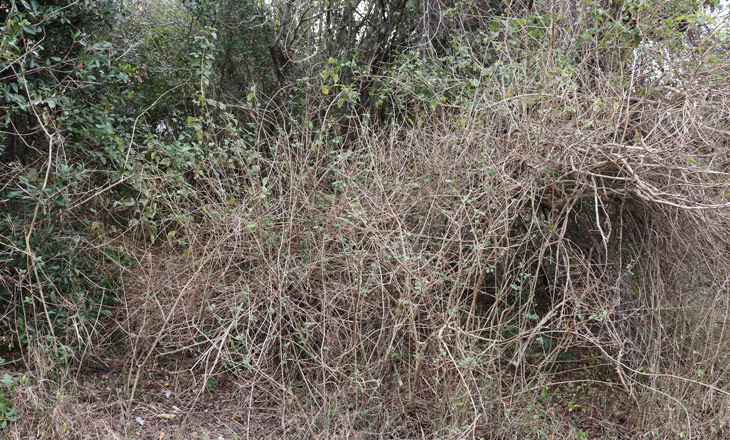This study is being undertaken by the Foundation for the Conservation of Biodiversity (BIOFUND) in the framework of the Biodiversity Offset Programme, implemented with the financial support of the World Bank/MozBio2 Project and UNDP/BIOSFAC in partnership with the Wildlife Conservation Society (WCS), the National Environment Directorate (DINAB) and the National Directorate of Forests (DINAF).
Published at 22/10/2021
Invasive plant species under study in the Maputo Special Reserve
The study seeks to provide information about the density of invasive plants, the areas occupied by invasive plants, the priority areas for restoration within the Maputo Special Reserve (REM) and the development of a plan for restoring and rehabilitating habitats for the reserve.
A technical team, between 5 and 14 September 2021, held a field survey on invasive plants in the REM, during which 16 invasive species were identified. The most common invasive species in the REM include Lantana camara, Psidium guavana, Chromalaena odorata and Eucalyptus sp. The Eucalyptus covers an estimated area of 800 hectares within the REM.
Invasive species are exotic plants which spread without control. They pose a threat to native species and to the balance of ecosystems, and may even pose a risk to people.
The study is being carried out by Colterra Environmental Consultants, a consultancy company hired by BIOFUND, under the pilot project on improving habitats for the REM. In addition to the Maputo Special Reserve, the Licuáti Forest Reserve (RFL) is also one of the areas covered by these projects which are seeking to test the technical and financial viability of biodiversity offsets in Conservation Areas and Forest Reserves in Mozambique.
For further information on this and other activities undertaken by the Biodiversity Offsets programme, click here.





